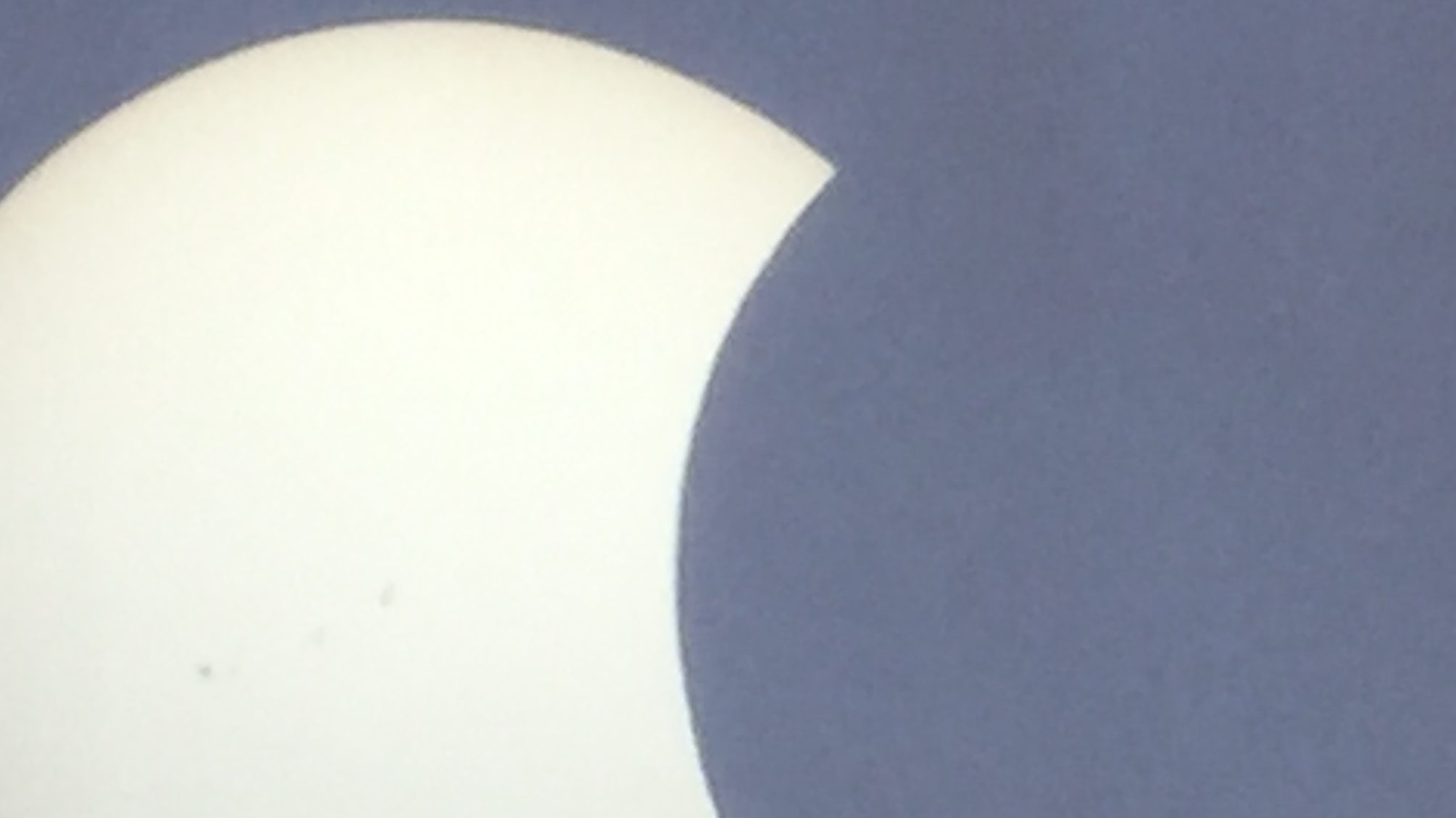Partial Solar Eclipse at Sunrise June 10

You might want to start looking for those eclipse glasses you squirreled away from the great 2017 solar eclipse. On Thursday morning an eclipse of the sun will already be in progress at sunrise. If you have a good view of the horizon you should be able to see at least a portion of the partial eclipse.
The 2017 eclipse was a total solar eclipse. However, none of the total phase of that eclipse was visible anywhere in Maryland. In Maryland, only a partial eclipse was visible. It’s the same with Thursday’s eclipse – in Maryland a partial eclipse will be seen.
As far as total eclipses go, I’ve traveled to the central eclipse path in order to view five total eclipses in my life time, so far. The central path is where the total eclipse occurs. It’s where you must be to view the sun’s pink prominences and pearly white corona during a solar eclipse. It’s where the sun is completely blocked by the moon as viewed from the Earth’s surface.
By the way, the next total eclipse whose central path crosses Maryland won’t occur until the year 2099.
Thursday’s eclipse is actually part of an annular or ‘ring’ eclipse. As with a total eclipse, an annular eclipse’s path across the Earth’s surface also has a central path. Annular eclipses are less dramatic than a total eclipse and are basically glorified partial eclipses in that a portion of the sun’s bright photosphere layer remains visible at all times, so proper and safe optical filtration is required throughout the eclipse experience. However, within the path of annularity the sun resembles a golden ring. That is because the dark unilluminated moon is located directly in front of the sun, but is too far away to cover the sun’s entire surface.
I’ve been fortunate to have traveled twice to the central paths of annular eclipses. Plus, I’ve observed countless partial eclipses.
The path of annularity on Thursday starts at sunrise in Ontario, Canada. The central path head north and crosses directly over the north pole. The annular eclipse ends at sunset in Russia.
Although annularity will not be visible from Maryland, we are being treated to a rather deep partial solar eclipse. Other geographical areas will enjoy various degrees of eclipse magnitude, or none at all. For example, in my native Nebraska the eclipse will have ended by sunrise and they see nothing of the eclipse.
Following are the relevant highlights for Westminster during Thursday’s partial solar eclipse.
The eclipse is already in progress when the sun rises in Westminster at 5:41 a.m. In fact, maximum eclipse occurred eight minutes earlier while the sun was still below the horizon. As the sun rises, the moon is retreating from in front of the sun, uncovering more and more of the sun. So, for Westminster, the maximum visible eclipse occurs at sunrise when about 72% of the sun will be blocked by the moon. This is why a clear horizon is important. The partial eclipse ends at 6:30 a.m. From sunrise until it ends, Westminster residents are treated to a 49 minute long partial eclipse.
Do you have a location where you can see the rising sun? If you’re familiar with the cardinal directions at your site you can estimate where to look.
For this, we use the solar azimuth at sunrise. On Thursday, June 10 the sun rises at azimuth +60°. Azimuth is measured along the horizon. Due north is 0°, east is +90°, south +180°and west +270°. Thus, on Thursday the sun rises in the east-northeast. Is your horizon flat in that direction, without buildings, trees and clouds?
The sunrise point is moving northward day-by-day until the Summer Solstice. However, it changes rather slowly and so that you can check actual sunrise a day or two before the eclipse in order to determine exactly where the sun will rise on eclipse day and determine if you have a clear unobstructed view.
Remember to use safe methods when viewing the sun. If using eclipse glasses, remember not to look through an unfiltered telescope or binoculars with them. Unfiltered and magnified sunlight will burn a hole through the glasses and could damage your eyes.
–Curt Roelle
